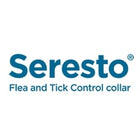
Seeing your dogs go through a seizure can be overwhelming for any pet owner. Understanding the underlying causes, recognizing symptoms, and exploring treatment options are essential for safeguarding your furry friend’s health and well-being. Whether it's an isolated incident or a recurring condition like epilepsy, this guide offers crucial information on managing and reducing seizure episodes.
What Are Seizures in Dogs?
A seizure is an abrupt, involuntary surge of electrical activity in the brain, leading to alterations in movement, behavior, and awareness. These seizures can range from a few seconds to several minutes and may happen sporadically or develop into a long-term condition like epilepsy.
Common Causes of Seizures in Dogs
Understanding the root cause of your dog’s seizures can help in effective management. Some of the most common causes include:
- Epilepsy: A brain disorder characterized by recurring seizures without an apparent underlying cause.
- Liver Disease: A malfunctioning liver can lead to toxin buildup in the blood, triggering seizures.
- Kidney Failure: High levels of toxins in the blood due to kidney disease can cause neurological symptoms.
- Brain Tumors: Tumors in the brain may press against nerve tissues, causing seizures.
- Toxins: Ingesting toxic substances such as chocolate, xylitol, rat poison, or certain plants can trigger seizures.
- Head Injury: A severe head injury can result in seizures, either immediately or later in life.
- Low Blood Sugar (Hypoglycemia): Small breeds, puppies, and diabetic dogs are at higher risk.
Symptoms of Seizures in Dogs
Recognizing the symptoms of seizures can help you act quickly:
- Sudden collapse or loss of consciousness
- Uncontrollable shaking or convulsions
- Paddling of the legs
- Foaming at the mouth or excessive drooling
- Staring blankly or appearing disoriented
- Unusual vocalization (whining, barking, or howling)
- Loss of bladder or bowel control
Types of Seizures in Dogs
- Generalized (Grand Mal) Seizures: Affect the entire brain and body, causing full-body convulsions.
- Focal Seizures: These affect only one part of the brain and may cause twitching in one body area.
- Cluster Seizures: A series of seizures occurring in a short timeframe.
- Status Epilepticus: A continuous seizure lasting over five minutes, necessitating urgent veterinary intervention.
What to Do If Your Dog Has a Seizure
- Remain Composed: Your dog needs you to be calm and composed.
- Keep Them Safe: Move furniture or objects that could harm your dog.
- Do Not Restrain: Let the seizure run its course without trying to hold your dog down.
- Time of the Seizure: If it lasts more than five minutes, seek emergency veterinary care.
- Cool Your Dog: Prolonged seizures can raise body temperature; use a cool cloth if needed.
- Monitor Behavior After the Seizure: Dogs often appear disoriented or tired after an episode.
- Consult a Vet: Keep a record of seizure frequency and duration to help with diagnosis and treatment.
Treatment for Seizures in Dogs
- Medications: Vets may prescribe anticonvulsants such as Phenobarbital, Keppra, or Potassium Bromide to manage seizures.
- Dietary Management: Some dogs benefit from a ketogenic or specialized diet.
- Avoid Triggers: Identifying and minimizing seizure triggers can help reduce episodes.
- Regular Vet Visits: Routine check-ups help track progress and adjust treatment if needed.
Preventing Seizures in Dogs
While some causes of seizures cannot be prevented, you can take steps to reduce risk:
- Provide a Balanced Diet: Avoid feeding toxic foods like chocolate, grapes, or xylitol.
- Keep Your Dog Hydrated: Dehydration can contribute to seizures.
- Avoid Stress and Overstimulation: Maintain a calm and predictable environment.
- Regular Exercise: Helps maintain overall health and reduces the likelihood of neurological issues.
- Regular veterinary check-ups: Identifying health issues early can help prevent seizures and ensure your dog’s well-being.
When to See a Vet
Seek immediate veterinary care if:
- Your dog has a seizure lasting longer than five minutes.
- Your dog has multiple seizures in a short period.
- There are changes in seizure patterns or severity.
- Your dog is injured during a seizure.
Final Thoughts
Seizures in dogs can be distressing, but with proper management and veterinary support, many dogs with epilepsy or seizure disorders live happy, fulfilling lives. Stay vigilant about symptoms, follow your vet’s advice, and provide your pet with a safe and loving environment.
By staying informed and implementing these strategies, you can effectively manage your dog’s seizures and enhance their overall quality of life.
For more pet health tips and high-quality pet medications, visit 79Pets.com.
FAQs About Seizures in Dogs
Can a seizure kill my dog?
Although most seizures are not deadly, extended episodes, known as status epilepticus, can pose a serious threat to a dog's life and demand urgent veterinary attention.
Are seizures painful for dogs?
Dogs are typically unconscious during seizures and do not experience pain, though they may be confused or disoriented afterward.
What should I do after my dog’s seizure?
Keep your dog calm, ensure they have a quiet recovery space, and monitor them closely. Contact your vet if needed.
Can diet affect seizures in dogs?
Yes, certain diets, like ketogenic or prescription-based diets, may help manage seizures in some dogs.
Should I let my dog sleep after a seizure?
Yes, seizures are exhausting, and your dog will likely need rest. Make sure that they are in a safe and comfortable environment.






